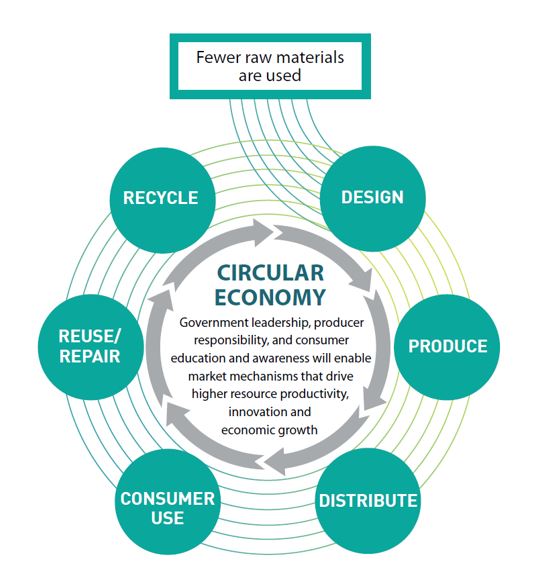Thinking in Circles
For centuries, the industrial “take-make-dispose” approach to production has involved extracting finite resources from the planet, using them to create consumer products and then throwing away the “waste.”

In contrast, a circular economy designs out waste and pollution, keeping products and materials in use and regenerating natural systems.
It’s an approach that mimics nature, where the by-products from one process feed into something else. A forest, for example, is a closed-loop system, where everything is biodegradable, consumed and recycled. Likewise, many traditional cultures have lived within their ecological means by recognizing that nothing is waste.
Today, a growing number of companies and governments are putting those principles to work. Since 2019, Guelph-Wellington has been one of the first industrialized communities in the world to apply a circular economy approach to food. Through COIL we’re now expanding our successful strategy across southern Ontario as well as into the environment sector.
A circular food system aims to eliminate waste by keeping as much energy, nutrients and materials as possible cycling through the system—and generating value as a result. It looks at everything from how we produce food to how we distribute, sell and consume it.

Circular principles can be applied to just about every sector of the economy, from textiles to tires, electronics to building supplies. Learn more about the concept of the circular economy through the Ellen MacArthur Foundation, a global leader in accelerating circularity across a breadth of industries and systems.
